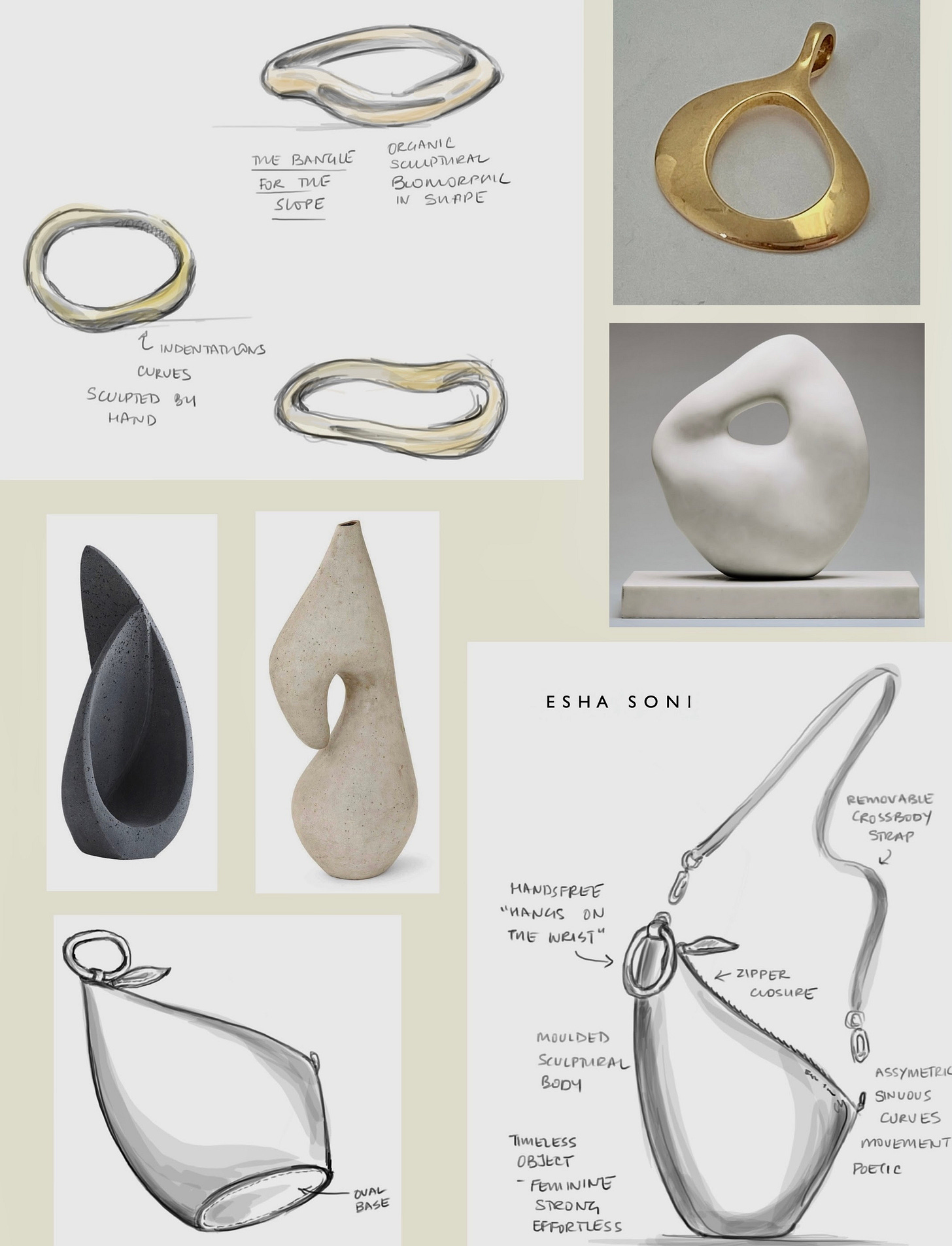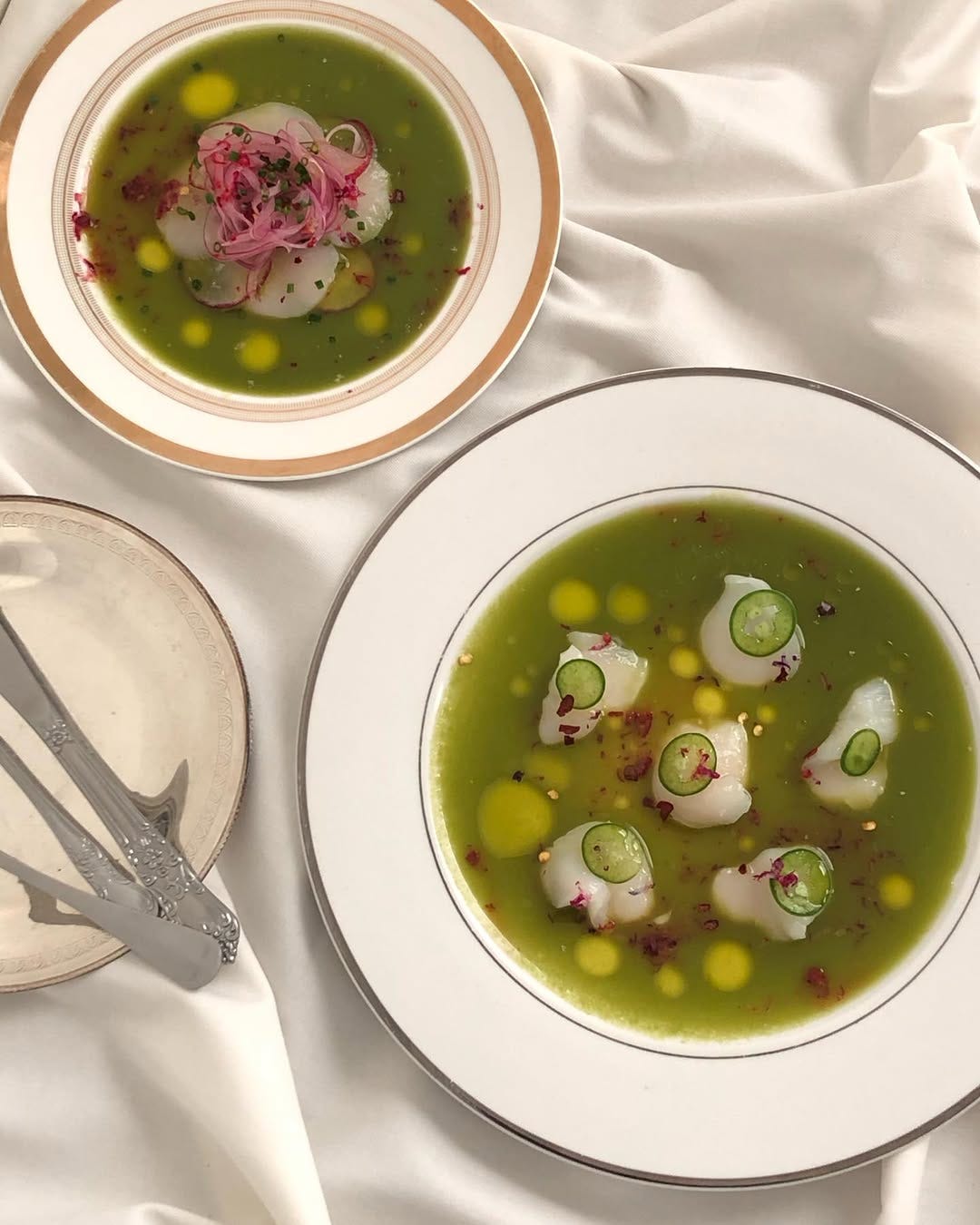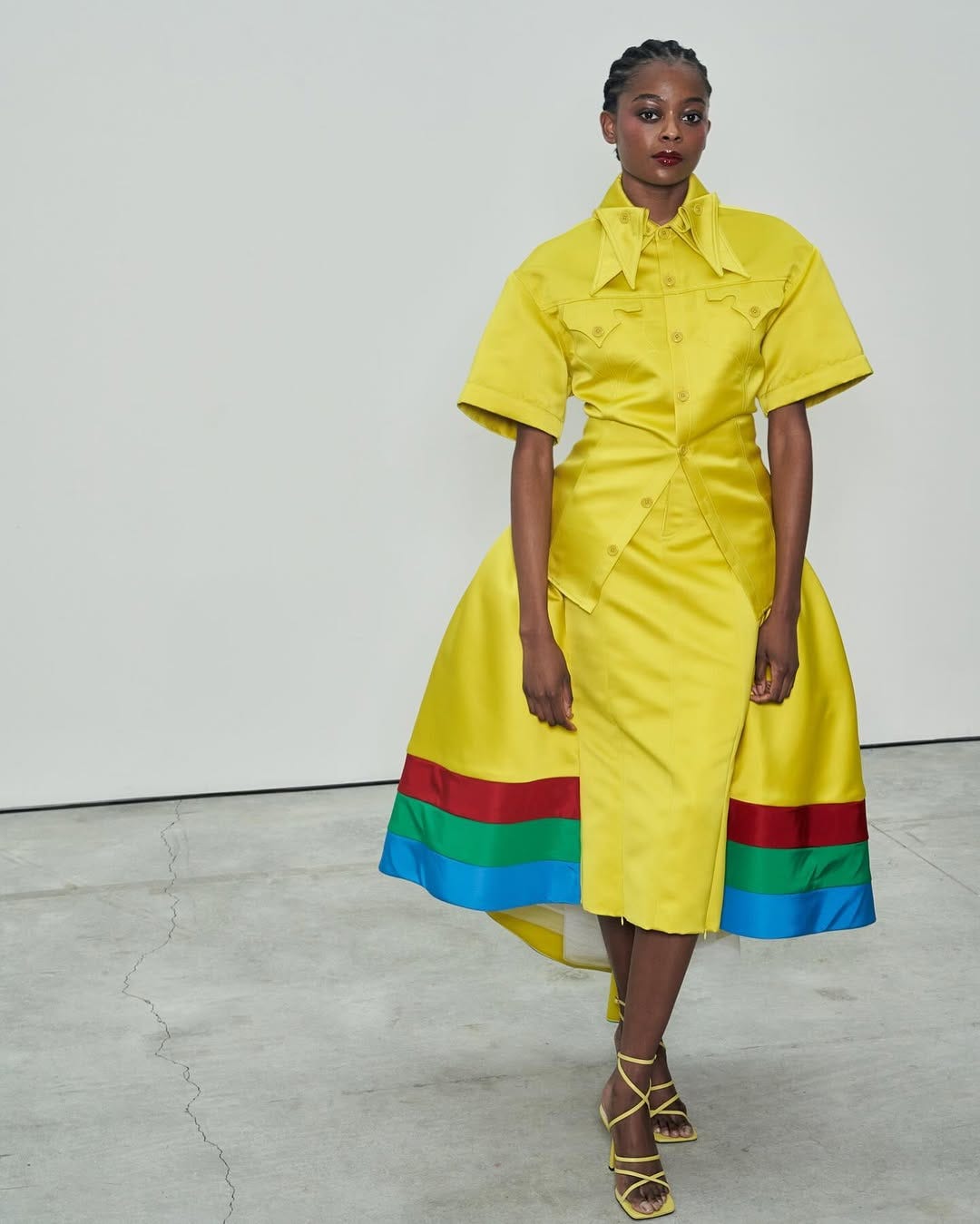Esha Soni handbags are perfectly scaled, wearable sculptures. Inspired by sculptors including Jean Arp and Jules Olitski, Esha’s impeccably crafted, often asymmetrical pieces are nothing short of swoon-worthy.
Raised in Mumbai, Esha moved to New York City to attend FIT. After graduating and spending time in Florence, she cut her professional teeth working for designers such as Ralph Lauren, Proenza Schouler, and Michael Kors. She was invited to join the CFDA (Council of Fashion Designers of America) in 2023 and was awarded the coveted US Fashion Trust Accessories Award by Isabel Marant in 2024.
For Esha, it’s not just about gorgeous design and materials, but about giving back to the roots that anchor her. SPEAK, the foundation she started, empowers underserved children in India through primary education. Its goal is to infuse vocational training that leads to tangible opportunity while encouraging timeless craftsmanship. What could be better than masterful design with a purpose?
Esha and I had a wonderful conversation about her varied design and art influences, how years working for fashion design legends influenced her own brand, and the investment pieces she loves. Read it below for a dose of spring inspiration.
Q&A
You’ve spent much of your career at iconic brands like Ghurka, Michael Kors, Ralph Lauren, Mansur Gavriel, and Proenza Schouler. What are some lessons from those experiences you’ve brought into building your own brand?
I had a very unique opportunity when I started working at Michael Kors. It was in 2006, which was pre IPO, and there were about 300 employees in the entire company. Because we were such a lean team and were growing so fast, I was essentially in charge of the luxury line, almost running my own business within Michael Kors. I got to put my hands into every single aspect of creating a product: merchandising, production, and everything I need to be able to do to create my product today.
I also got to work with the best tanneries, the best factories, the best hardware suppliers, and I built such a strong network, which is everything in this industry. More than anything, I learned how important it is to work with people who are aligned with your thinking. My bags are produced in a factory outside of Florence, and the woman who owns the factory and I are very much aligned in how we want to produce the bags and what we want to achieve.
What drew you to create something timeless rather than chasing trends?
Working in the industry for that amount of time also gave me clarity on what I didn’t want to do. A lot of times, I felt like I was constantly chasing, chasing, chasing. The minute you finish one season, you have to get on the next season, and at one point, you’re working on five different seasons, and you’re just like: What is going on? We are not saving the world. We’re not doctors. Why are we working like this? Something is broken.
I wanted to take all of that chasing out of the process and just slow down. So I said to myself, “I want to sit down and really enjoy the process of creating. I want to take my time and be intentional, and if it’s not ready, it’s not ready. I don’t have to get something out at a certain time if it’s not right.”
From there, it was very natural to design something that felt timeless. I'm very much against the idea of creating something and then it being on sale a few months later because, to me, it devalues the product. And hello, let’s talk about sustainability — it’s not sustainable.

I didn’t have a merchandising plan, I just went with my gut feeling that I didn’t want to chase trends and that if I created something from the heart — something beautiful that I love — the customer would come. We should all be listening to our intuition and instincts more, but we don’t because there’s so much noise.
Tell us a bit about your design process. What fuels your creativity within or outside of your professional world, and how does that get translated into your bags?
When I started to sketch the pieces in 2019, I had nothing in my mind. I had no idea of launching a business, I didn’t know what I was doing, and I think that’s why there’s so much purity in the collection. I sat myself down and said, “I’m just going to start drawing.”
Of course, I do a lot of visual research. I had these images of ceramic sculptures and metal pieces from artists like Jean Arp or Jules Olitski — these beautiful, organic shapes. At the time, there were no asymmetric shapes on the market, so when I sketched out the shape of The Slope and The Arc, they were very fresh ideas.
As for the artists I’m inspired by, it’s very simple for me: it’s their usage of color and shape. I don’t get more conceptual about it — it’s just what visually makes my heart skip a beat. Some other artists who inspire me include Virginie Hucher, Mark Rothko, Conrad Marca-Relli, and Carlo Scarpa.
Do you have any habits for finding new creative inputs that inspire you?
It’s not very romantic, but I do a lot of research on Pinterest. I spend many hours there getting sucked into a stream of research.
Traveling is also a very important part of the process. Your brain is more of a sponge when you travel, and you want to be inspired. That desire makes you more alert and aware of your surroundings, so you notice things that you might not on a day-to-day basis.
What’s been a favorite travel experience of late?
In my most recent travel history, the place that touched my heart is Alentejo in Portugal. Two of my closest friends live in Lisbon, and one of them just bought this gorgeous farmhouse in Alentejo. When I visited it, I felt grounded but also inspired. It was so beautiful and natural.

When I went to San Sebastian recently the food and the nightlife all felt so vibrant. We visited the Balenciaga Museum, which was in this charming fishing village, and that inspired me. When you’re living in the States, things are a certain way, and then you travel and are reminded how in touch with nature most places are.

Are there “must-see areas” of a city that you consistently explore to capture the inner life and energy of that city?
I’m from Mumbai, and whenever I travel to Bombay it’s really important for me to visit an area called Kala Ghoda, which essentially means “black horse.” It’s got very cool boutiques, restaurants, and art galleries, and it always gives me a pulse of what’s going on from an artistic perspective.
Who are your favorite under-the-radar designers, artists, photographers, chefs, or other creatives who you wish more people knew about?
I think what Agbobly is doing is very interesting in terms of color and how he's tapping into his heritage.
I’m also drawn to ZANKOV, Marrakshi Life, and The Salting. It’s funny, I don't usually dress so colorfully, but I love their use of color, print, and woven or textural elements.
One of my closest friends is a tattoo artist and also one of the most incredible chefs. He makes delicious food, his presentation is very chic, and he just launched his private supper club company, CLERMONT.

Then there are a few ceramicists I love: Abid Javed, Valentine Schlegel, and Simone Bodmer-Turner. Some of them use beautiful colors in their ceramics, but for me, it’s all about the shape — something happens to me when I see them, and I get excited by what they have created visually. Most of the pieces are very organic and biomorphic, and they have been a very big part of my inspiration in creating the line.

You talk about your bags being heirloom pieces. What are some of your favorite investment pieces in your home or closet?
Any of my double-faced cashmere outerwear from Michael Kors Collection. When I bought them, I remember thinking, “Why am I spending so much money on this?” But today I still grab for them. They’re timeless. They’re gorgeous. I have one in this beautiful chartreuse color with a very interesting and sculptural shape.
And then, of course, any of my diamond jewelry from my mom, Poonam Soni. I have a diamond tennis bracelet with beautiful gold detailing that I wear all the time and feel is a great investment piece.
The other investment that’s always worth it for me is shoes and footwear. I have a pair of knee-high, forest green CELINE boots that felt so expensive at the time, but I’m so glad I bought them because every fall and winter I pull them out and they never go out of style. Whatever you’re wearing, you have to have the right shoes — and, of course, the right bag.
What are a few pieces in your closet that you often gravitate toward and make you feel most like you? How do accessories play a role in your personal style?
I always tend to grab for this one oversized chocolate brown blazer that I have from The Frankie Shop. I remember thinking it was cool when I bought it, but I never thought I would want to wear it all the time, and I always get stopped on the street by people asking me where it’s from. There’s just something about how big and oversized it is, and the beautiful color. I have to say to myself, “You can’t wear this again.” But it’s the one piece that always makes me feel confident and good.
And then there is a skirt by Proenza Schouler that I always gravitate towards. It’s black with these eyelets at the bottom. It’s a wraparound skirt that just makes me feel feminine, but also polished.

Accessories finish the look for me. When I dress, I tend to gravitate towards metal elements, whether it’s a bracelet or my brooch that I throw on a blazer. I also wear and love everything on my line — I’m lucky to have access to so many colors and styles.
How did your mother, Poonam Soni, being a successful jewelry designer influence your career in accessories? Is there anyone else who inspires you or has impacted your work?
Growing up with a mother who was so entrepreneurial and ahead of her time made me feel like I could do anything. For me, I always knew that I was going to have my own brand — it was just a matter of when.
In general, I’ve always been inspired by women who rise and who lift each other up. When I see powerful women running businesses or their own brands — women like Vanessa Barboni Hallik (founder and co-CEO of sustainable fashion brand Another Tomorrow) and Aurora James (founder and creative director of luxury accessories brand Brother Vellies) — it just makes me feel like we as women can do so much.
Is there a book you find yourself visiting again and again? Why do you find it so profound?
I'm very spiritual. I practice Nichiren Buddhism, which is a form of chanting. There is a book called The Heart of the Lotus Sutra by Daisaku Ikeda that I always tend to pick up. I can open to any page, and something will be underlined. It puts things in perspective and just grounds me — it's almost like my spiritual guide.
What is your favorite quote, motto, or mantra? How does it impact how you approach your work or life?
“We don’t see things as they are, we see things as we are.”
Sometimes we tend to project whatever’s going on within us externally. I think that’s really important, and it helps me remember the state of mind that I have to be in every day.
You’ve recently had an incredible launch at Bergdorf’s. Do you ever take feedback from a merchant or retailer that you respect in terms of design direction?
I won’t blindly do whatever people are telling me to. I will listen, but I will take what I feel is right from it because I have a very clear idea.
I’ve always been like that, and sometimes it’s been a bit of a struggle. When we used to work with bigger accounts at Ralph Lauren and other companies, they would say, “You have to do this,” and I’d say, “No, I respectfully disagree. I don’t think this is something the customers look at our brand for.” In retrospect, I can feel confident because I was right about a lot of the things that I stood my ground on.
I think it’s important to listen, and it’s important to hear, but what sets you apart from everyone else is your ability to make a decision based on whether or not it’s right for you.
How do you think about brand growth and evolution while staying true to your desire not to chase? With timelessness, how do you think about what’s next for Esha Soni?
I want to keep creating pieces that become iconic. The goal for me is to constantly feel a sense of being inspired. I have new ideas for bags, but I am not rushing to produce them or make them right now, because I want to flesh them out in my mind first. I want to take that time to create a timeless product.
The goal is to create a modern luxury house that creates beautiful pieces which, you can feel rest assured, have been made with a lot of thought and intention. They're not going away anytime soon, so you can really feel like your investment is safe.
When available, i/Edit uses affiliate links — if you purchase something linked in our newsletter, we may receive a commission to help fund our continued work! Rest assured, all product recommendations still come straight from our i/Editors and are not driven by sponsors.










Alisa! Love this.. thank you for taking the time to really understand and appreciate what I do! This is so beautiful! Xx